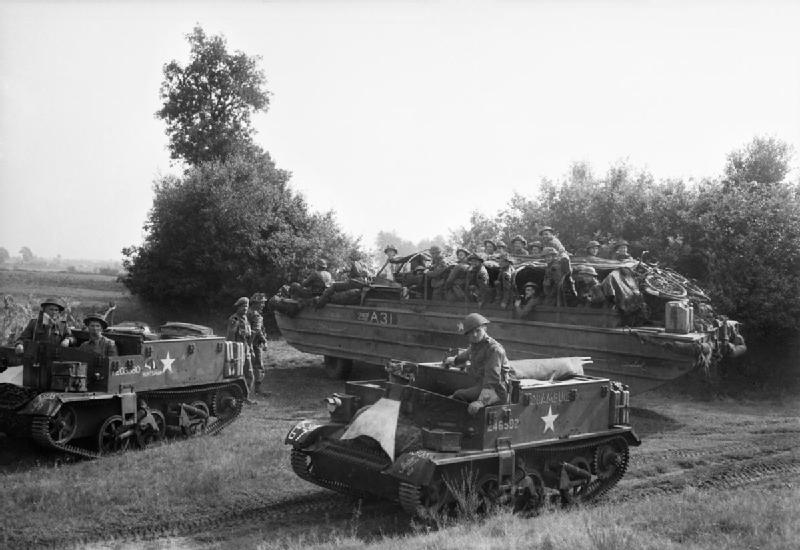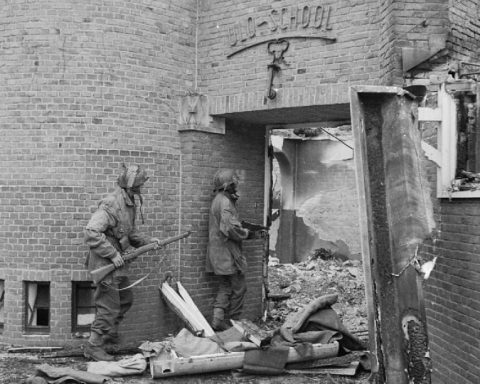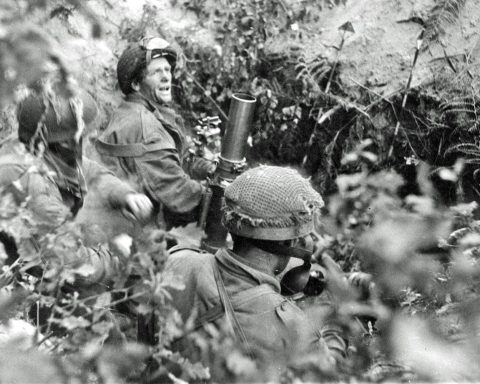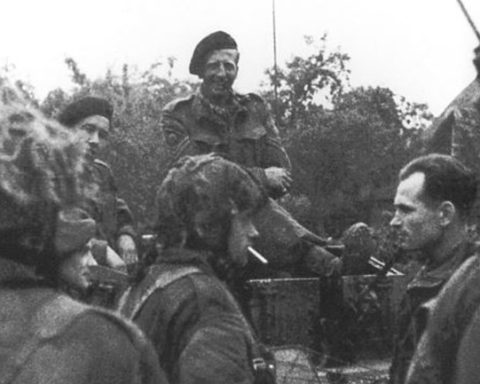On Wednesday evening, September 20, the Americans managed to capture the Waal Bridge near Nijmegen intact through a heroic attack . But on Friday morning, September 22, the Allied ground troops of XXX Corps were still stuck in Lent on the north side of Nijmegen.
On Thursday, September 21, 47 tanks of the Irish Guards had tried to advance to Elst. After the first five tanks were destroyed by German anti-tank guns shortly after the attack , the attack was quickly stopped.
Prior to Operation Market Garden, Prince Bernhard had already warned that the flat, open Dutch polder land was far too vulnerable to attack with tanks. However, Prince Bernhard’s warnings were dismissed by Field Marshal Montgomery and General Brian Horrocks of XXX Corps.
After the debacle of the attack on September 21, General Horrocks also concluded that he needed more infantry to continue his advance towards the Rhine. But that infantry was not yet available on Thursday, September 21. It took almost 24 hours before there were enough infantry soldiers in Nijmegen to advance to the besieged British in Oosterbeek.
One of the greatest weaknesses of Operation Market Garden had been painfully exposed. The road between Eindhoven and Nijmegen was extremely vulnerable to German attacks. A few German tanks and soldiers were enough to interrupt the flow of troops to the north.
In fact, the Allies had to deal with a front line that was 75 kilometers long and 10 meters wide. Even small, targeted attacks on ‘Hell’s Highway’ were able to halt the advance of troops and equipment.
German Field Marshal Walter Model immediately saw this weakness in the Allied plans. For that reason he had sent all the German troops and tanks that the Germans had at their disposal here. It is not without reason that the largest tank battle on the Western Front in the Second World War took place during Operation Market Garden near Overloon.
The delay of the Allies enabled General Bittrich to get his defenses in order. The 10th SS Division Fundsberg was ready to stop the Allies at Oosterhout, Elst and north of Bemmel.
General Horrocks tried to reach the Rhine via two attacks on Friday, September 22. A British attack with tanks and infantry along the main road to Elst was stalled south of Elst by heavy German resistance.
An attack via Oosterhout was more successful. Due to a number of orchards, the landscape here was less open. Oosterhout was defended by two battalions of German troops, but the British of the 43rd Wessex Division together with the 7th Somerset Light Infantry managed to break through the German positions via Oosterhout and Valburg with relative ease.
More than a hundred Germans were captured and the number of casualties on the Allied side was small. There were only 19 injured.
15 kilometers in an hour
After the fighting at Oosterhout, the British were able to advance to the Poles at Driel without any problems. The leading units of the 43rd Wessex Division reached the south side of the Rhine in the early evening. They had covered the last 15 kilometers in an hour.
Now that contact had finally been made with the Poles in Driel, there was a more or less continuous front from Nijmegen to the British in Oosterbeek. But without a suitable connection across the river, the British in Oosterbeek were still on their own. That night, only 52 Polish paratroopers managed to cross the Rhine and strengthen the British positions.







